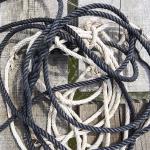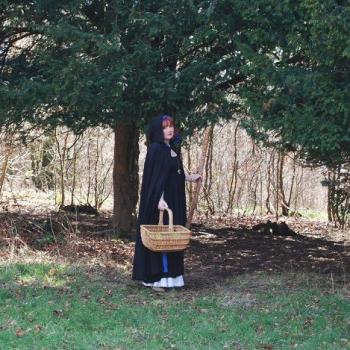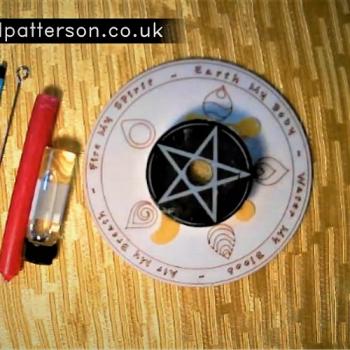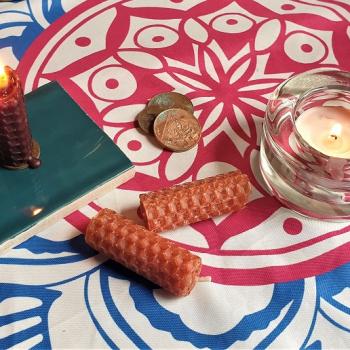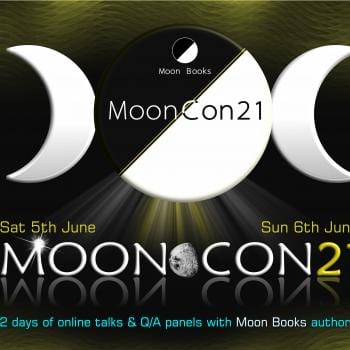Circle casting: Thoughts from a Kitchen Witch
My thoughts on circle casting (taken from The Art of Ritual book).
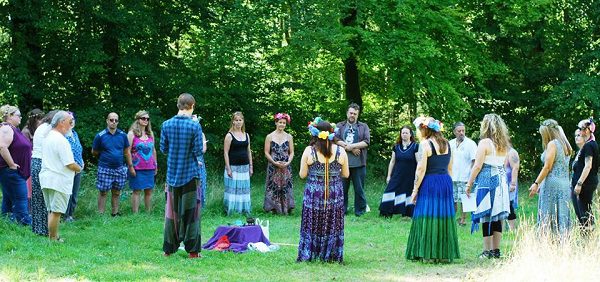
- If you are just working on your own, meditating or doing a simple candle spell I don’t believe casting a circle is always necessary.
- If you regularly smudge and protect your house and have your own shielding in place I wouldn’t bother, but the choice is yours.
- If you are going to be raising energy, especially if there is a group of you then I would recommend casting a circle.
- If you are gathered together to celebrate a Sabbat especially then it’s nice to ‘put on the full works’ too.
Casting a circle puts up a protective barrier around you, it not only keeps out any unwanted negative energy. But it also keeps the energy you are raising safely inside the circle until you release it. Casting a circle does however create a place ‘between the worlds’ it is grounded in the physical but also gives you a connection to the spiritual. It can also be a very safe, secure place especially if you need a bit of a spiritual hug, casting a circle and just ‘being’ inside it can be very uplifting.
Some witches will invoke the elements before casting the circle, others will cast the circle first it’s another one of those personal choice things.
Deosil and widdershins
Two words you will often hear when people refer to rituals the first is deosil which means clockwise or sun wise and then widdershins which means anti clockwise. Basic rule of thumb is when you want to bring good energy or protection in you go deosil (clockwise). Then when you want to dismiss something or banish negative energies you work widdershins (anticlockwise). The circle is cast deosil and the quarters are called deosil. Always move around the circle in a deosil motion. The circle and quarters are then usually released widdershins.
To cast
To cast a circle, you can use an athame, a sword, a wand, a staff or just your finger, it is a personal choice. Walk deosil (clockwise) around the circle with your arm outstretched, visualise a bright white light coming from your arm and creating a circle. You can go further with this and make the circle come up and over you in a dome shape and even under you to form a complete bubble. Try adding colours to the visualisation too. You can chant as you cast the circle. When we hold open rituals, we scatter herbs as we walk the circle, often rose petals but also herbs that correspond to the intent of the ritual. Never scatter any material on the ground that is not bio-degradable please!
You walk completely around the circle until you come back to where you started. If it is a small circle and you want to use a longer chant you can walk the circle three times, six or nine times.
If there are a group of you the circle can be cast with all of you linking hands and walking the circle together, this works well with a chant to accompany the walking.
The circle
The circle is a sacred symbol and one that is used worldwide. A circle has no beginning and it has no end, it is never ending, it is infinite. It is also the shape of the earth, the sun, the moon in fact all of the planets. It is a symbol of life itself. When everyone stands in circle they all stand equally, there is no ‘head of the table’. A circle is also a boundary; it marks the edge of your sacred ritual space.
There are several trains of thought around the circle itself, some will cast the circle and it will be a rigid barrier. If you forget something and need to step outside of the circle a ‘doorway’ must be cut in the circle usually with an athame to allow you out and then closed once you are back inside. Others (like our coven) cast the circle wide and view it as a flexible ‘bubble’ that covers us if we need to step away from the circle to get something (usually the cake…). There is also the view that each person has their own protective circle that moves with them. Go with your intuition and what feels right for you.
The circle is usually held in place with visualization as a circle of energy, but you can mark it in the physical realm as well. Besoms end to end look quite dramatic, but cords also work well or circles of flower petals or leaves but that only works when it isn’t windy! Crystals or pebbles can also be placed around the circle or a good ole fashioned ring of salt.
And then there are groups that choose not to cast a circle at all believing that the act of coming together in ritual brings sacred space with it or by using the same area all the time nature is its own sacred space.
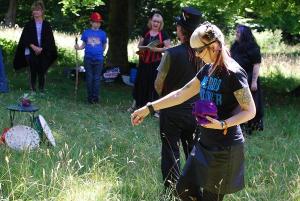
Procession
I have been a part of many druidic rituals where we don’t start in the circle. We form a line at a designated spot and walk in procession until we meet ‘the gatekeeper’. Where we have to ask permission to enter the sacred space. Once the gatekeeper is assured that our intentions are honourable he allows everyone through. We process to the edge of the circle turning and pausing to salute the sun in the East, then moving into the circle.
Perfect love and perfect trust
This is a bit of a sketchy area; the phrase was mentioned in one of Gerald Gardner’s books and has appeared in several poems and redes since. But I suspect the notion was around before then.
Some traditions will ask you “how do you enter this circle?” and you are required to answer; “in perfect love and perfect trust” before they will let you into the ritual space. The idea being that once you enter the ritual circle, that you are sharing that space with respect to everyone else some of whom may be nervous or vulnerable. You are saying that by agreeing to the question asked, you bring respect and trust with you and that you will show the same to your fellow members of the circle. It is a way of making people feel safe and secure within ritual.
Please bear in mind that not all pagans follow the guideline…


